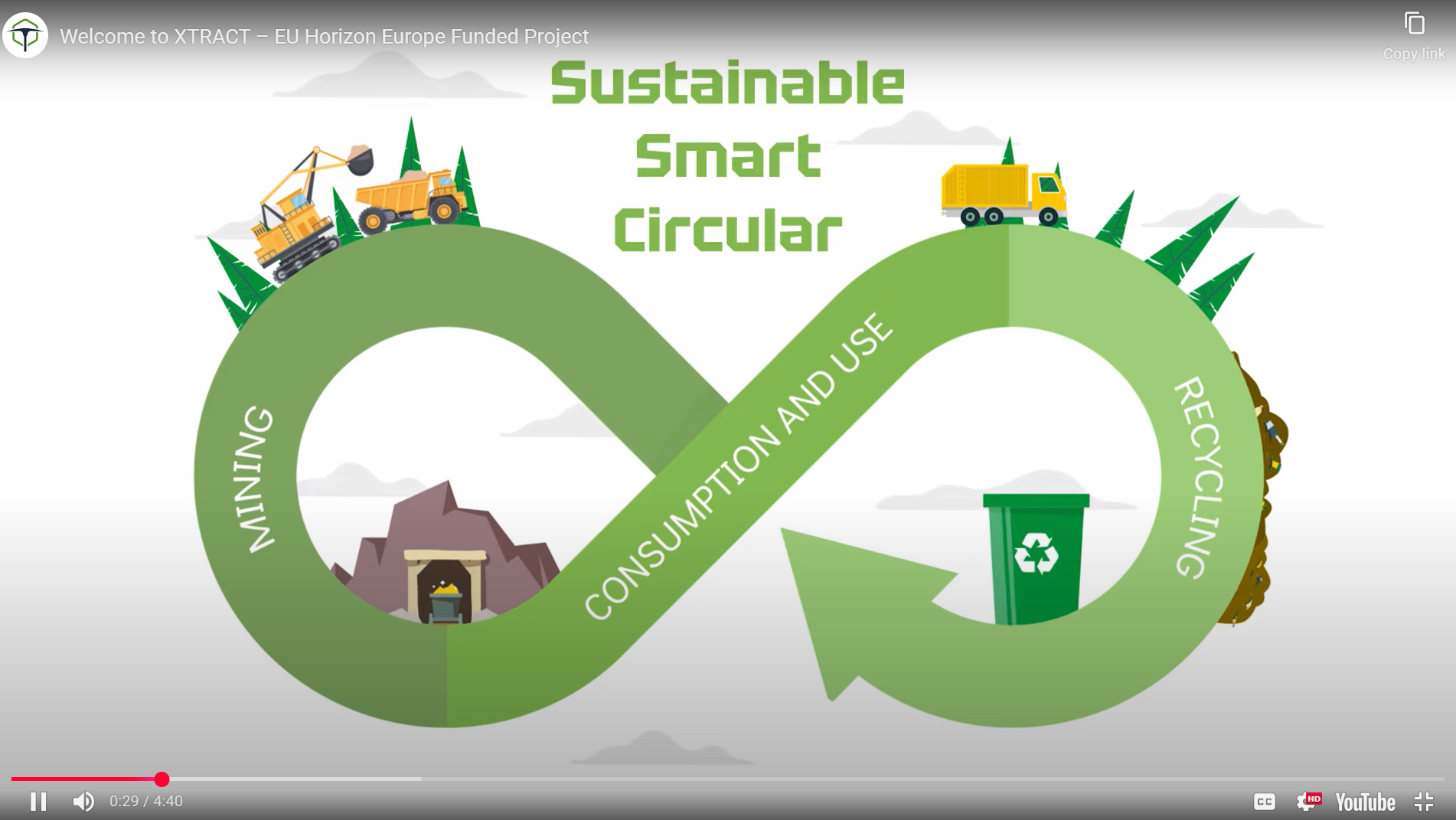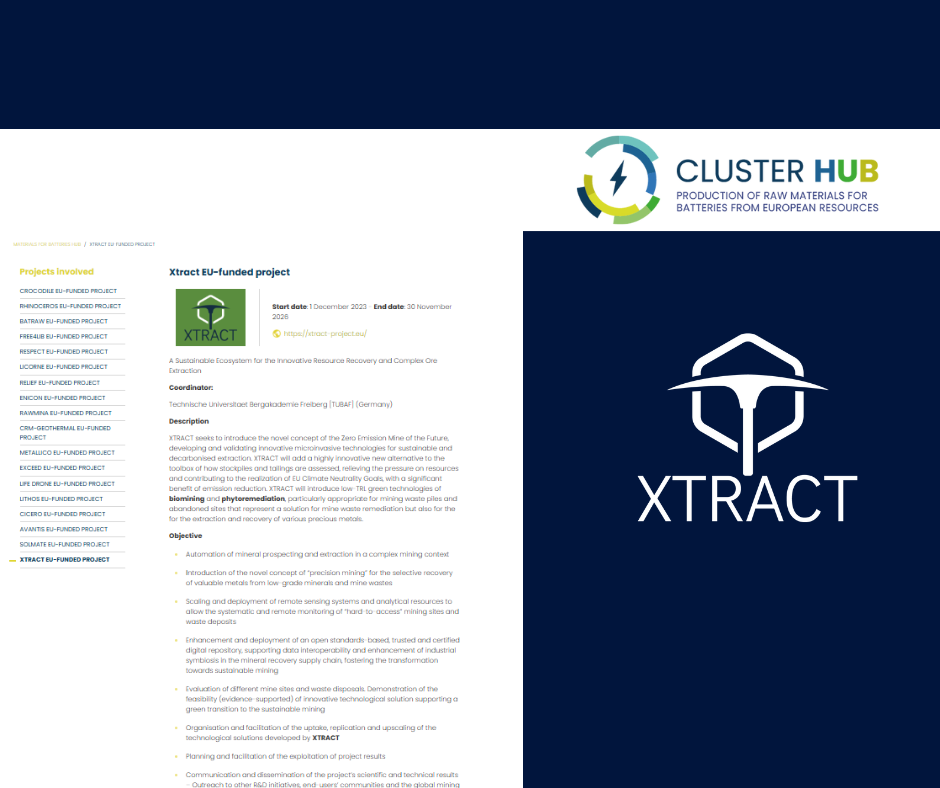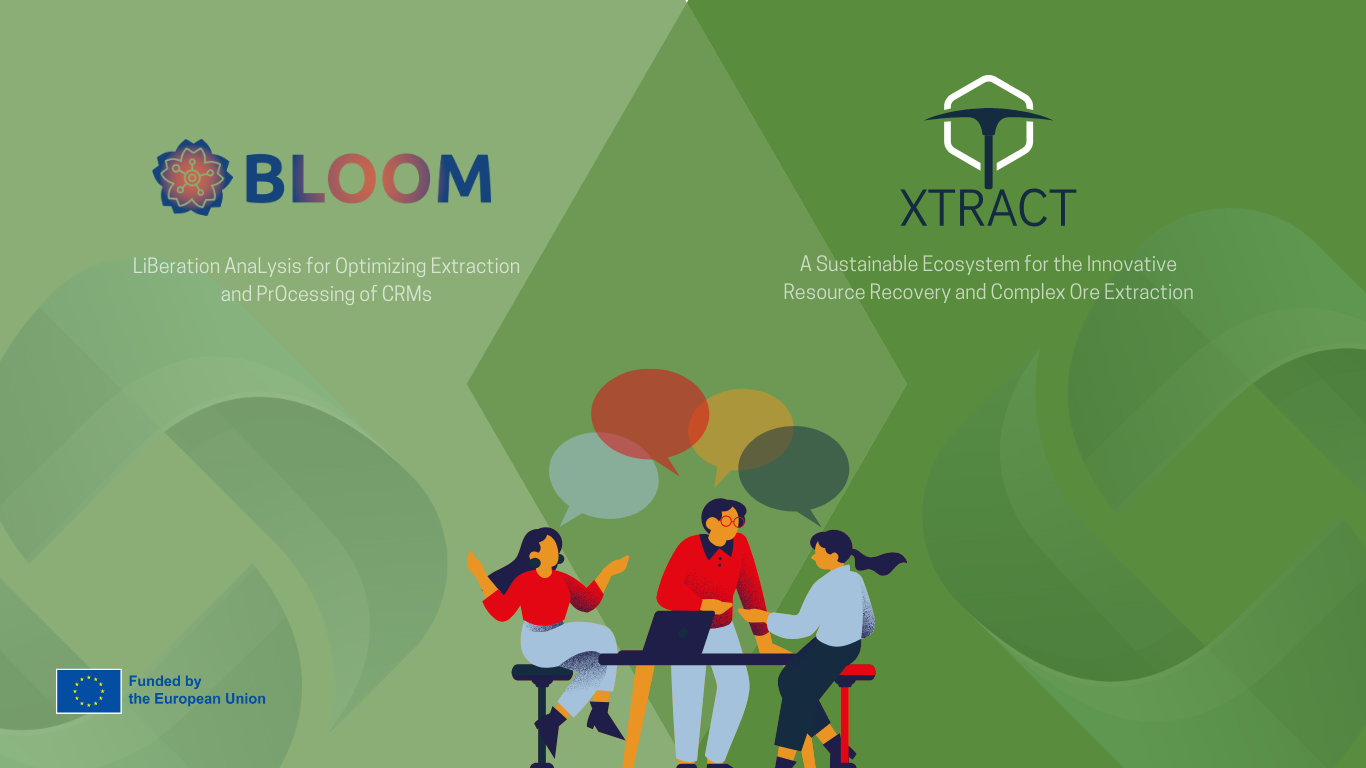XTRACT Project Webinar #1 Wrap-Up
Exploring Phytoremediation and Phytomining with Trees and Plants Under Circular Economy
📌 On 7 July 2025, the Horizon Europe XTRACT project successfully hosted a webinar titled “Novel Phytoremediation Solution and Concurrent Metal Phytomining Using Trees and Plants as Part of the Circular Economy.” The session, co-organised by the Technical University of Crete (TUC) and the Lithuanian Research Centre for Agriculture and Forestry (LAMMC) and supported by Acceligence, brought together researchers and practitioners to discuss nature-based solutions for the remediation of contaminated sites and the recovery of valuable metals.

The event focused on how trees and plants can be used for the clean-up of polluted soils, aligned with the principles of circular economy. Participants explored the dual role of phytoremediation and phytomining technologies: mitigating environmental risks while enabling resource recovery from marginal lands such as abandoned mine sites.
Webinar Focus and Scope
The webinar concentrated on the application of trees and plants in phytoremediation, particularly within the XTRACT project context, while also highlighting broader plant-based strategies. Two main phytoremediation mechanisms were presented:
- Phytostabilisation: Immobilising contaminants within the root zone to reduce mobility and leaching.
- Phytoextraction: Accumulating metals into the aboveground biomass, enabling potential harvesting and recovery.
The speakers highlighted the differences between the selection of smaller plants (herbaceous and others) and tree species.
- Deep rooting systems capable of accessing subsurface contaminants
- High biomass for sustained metal sequestration
- Long lifespans that support long-term stabilisation
- Ecosystem services such as erosion control, biodiversity enhancement, and carbon sequestration
The phytomining potential of certain hyperaccumulator species was discussed, offering a sustainable pathway to simultaneously remediate soil and recover critical raw materials (CRMs).
Key Results and Findings from the XTRACT Project
Tree-Based Phytoremediation
- Deep root systems allow access to deeper contamination layers.
- Long-term metal retention in roots and woody biomass supports stability over time.
- Trees contribute to ecosystem co-benefits, including slope stabilisation and habitat creation.
Metal Uptake and Storage Dynamics
- Uptake is influenced by active and passive transport, including unintentional absorption (e.g., cadmium mimicking zinc).
- Metal mobility determines storage location: Zn and Mn typically translocate to shoots, while Pb tends to accumulate in roots.
Hyperaccumulator Tree Examples
- Shorea roxborghi – Mn monoaccumulator
- Tectona grandis, Terminalia ivorensis – Zn, Pb, and Cu accumulators
- Sebertia acuminata – capable of storing ~37 kg of Ni per tree in latex
Hyperaccumulator Plant Examples
- Atriplex halimus – Pb, Zn accumulator
- Lantana camara – Cd accumulator
- Helianthus annuus – Cd, As, Pb, Zn accumulator
XTRACT Lab Trials
LAMMC team conducted hydroponic and pot soil experiments using five common European tree species:
- Populus and Salix: effective Pb phytostabilisation
- Salix: Cd accumulation in aboveground tissues
- Alnus glutinosa: up to 0.9% Pb retention in roots; also effective for As stabilisation
Site-Specific Application
- Mixed-species planting (e.g., Salix for Cd, Populus for Pb, Alnus for As) can enhance overall phytoremediation efficiency.
- Supports soil resilience, reduces metal leaching, and promotes post-mining site revitalisation.
In-situ Testing and Broader Context
The phytoremediation-phytomining approach will be tested in-situ at the Lavrion Cultural and Technological Park, a historical mining site with significant contamination by Pb, Zn, Cd, and As. Such sites pose ongoing risks to the environment and human health through air, soil, and water pollution.
Lab-scale screening of hyperaccumulator plants is ongoing to identify species with optimal performance based on:
- High growth rate
- Tolerance to toxicity
- Efficiency in translocating metals to harvestable tissues
The effectiveness of phytoremediation depends on multiple site-specific parameters, including soil type, pH, climate conditions, and the use of targeted soil amendments to improve bioavailability and uptake.
The XTRACT webinar demonstrated the growing relevance of phytoremediation and phytomining technologies as part of a sustainable and circular approach to land management. By combining ecological restoration with strategic resource recovery, such solutions hold strong potential for the regeneration of polluted areas across Europe and beyond.
A warm thank-you goes to all speakers and attendees for contributing to a highly engaging and informative session.
📌 Stay tuned for more updates on the XTRACT project’s field trials and results.







